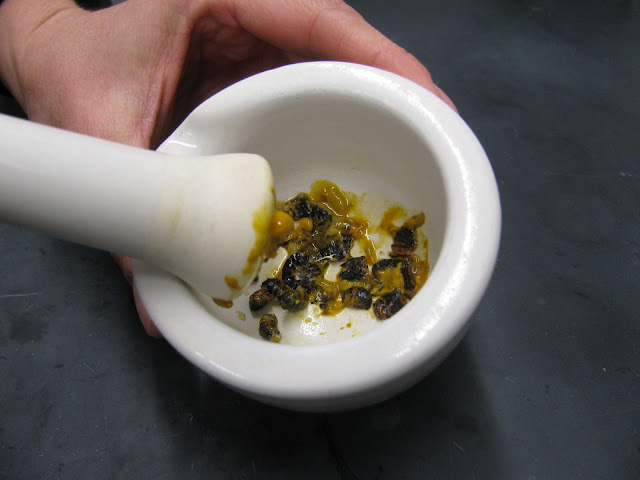 |
Karessa and I pretending to be honeybee pathologists
|
The final classroom session for our apprentice program was held at the Oregon State Honeybee Lab on campus. Lots of cool research, lots of fascinating things to examine under microscopes, and lots of gruesome little oddities.
 |
Sample bees from Karessa's hive
|
Students in the class brought samples from their own hives to test for tracheal mites and nosema, a virus similar to dysentery that attacks a bee's digestive system, making it hard for them to consume honey and build up their population.
 |
Bee abdomens
|
To test for the presence of nosema spores, bee abdomens were separated from the bodies and collected in a dish. This isn't the gross part. Wait for it...
 |
Grinding bee abdomens for testing
|
...okay, here it is. The abdomens were mashed and diluted with water to make a solution that could be viewed under a microscope. Yep, these bees had nosema spores.
We were able to use lab equipment and microscopes to dissect bees and examine their anatomy. Here is a bee with an extended proboscis and an extracted stomach and stinger. It was amazing to see honeybee eyes, hair, and wings under magnification.
 |
Yellowjacket queen
|
And one of the little oddities. Yellowjackets, especially queens, have few friends among beekeepers. Thanks to the Honeybee Lab for an awesome evening - we learned a lot and had fun doing it!


No comments:
Post a Comment